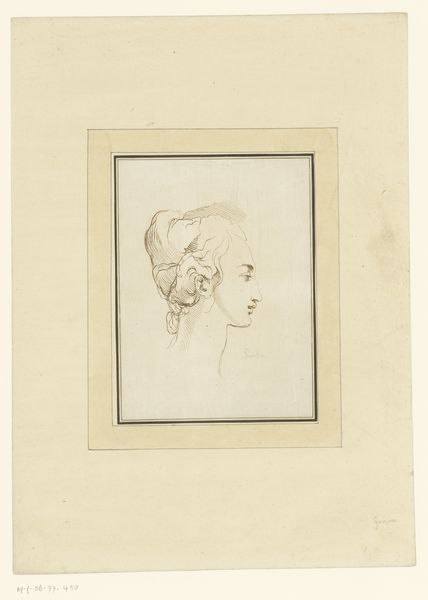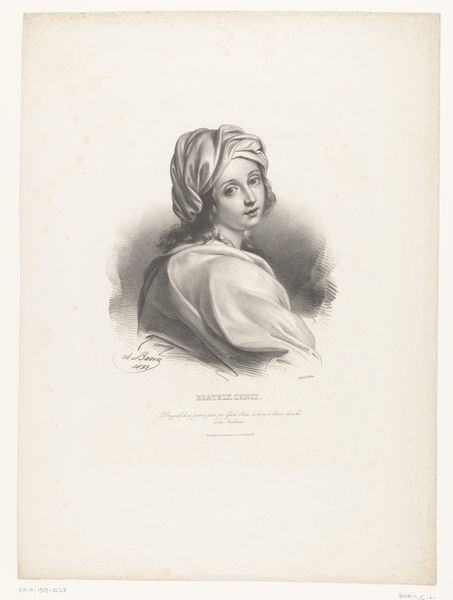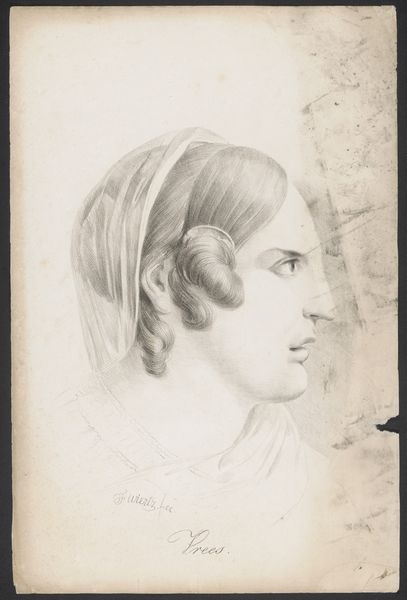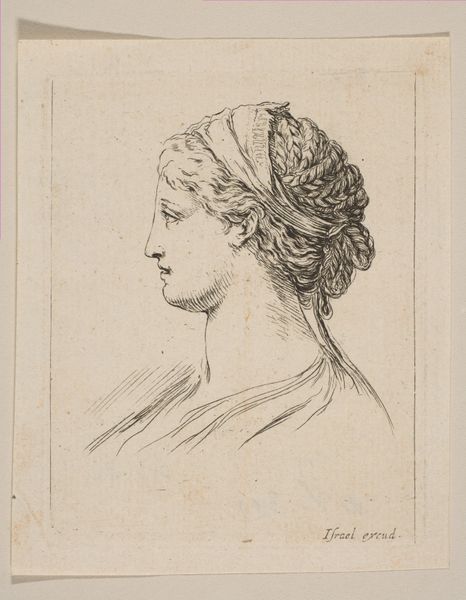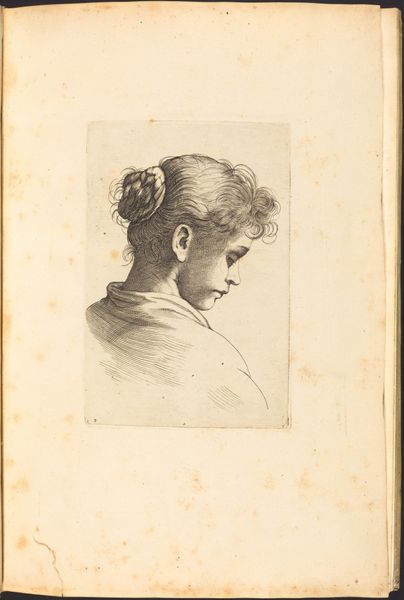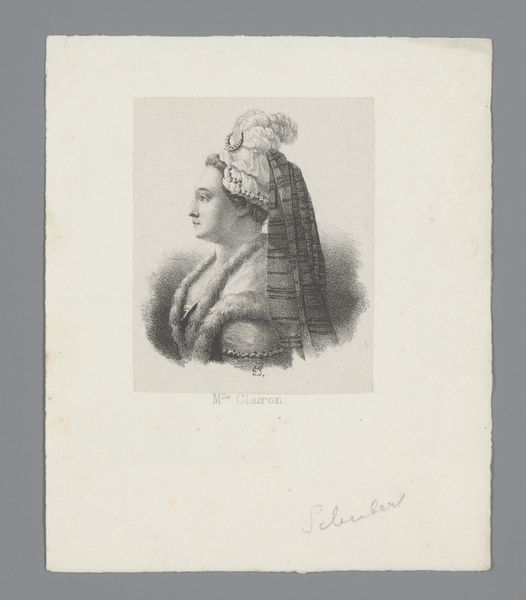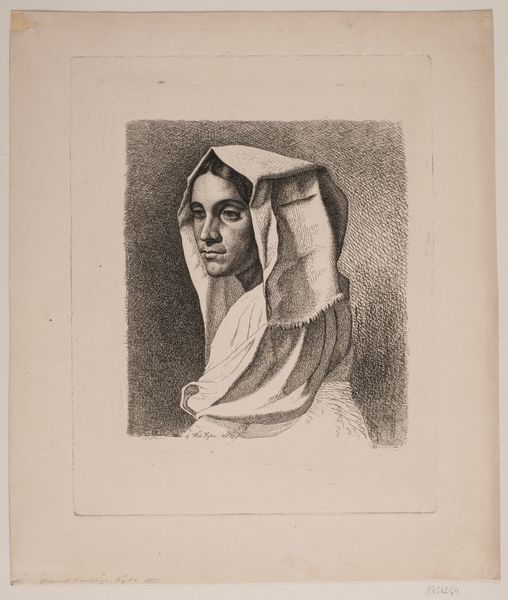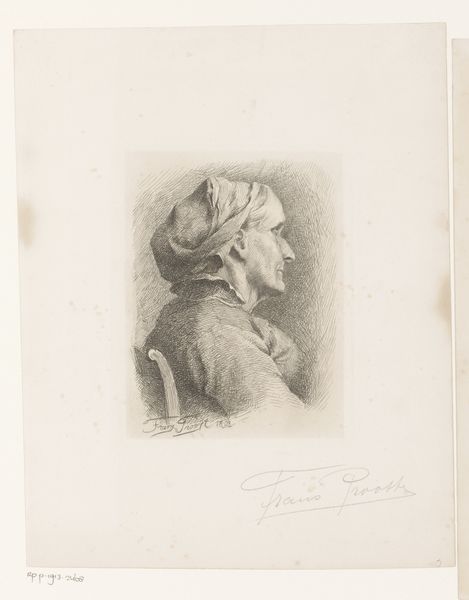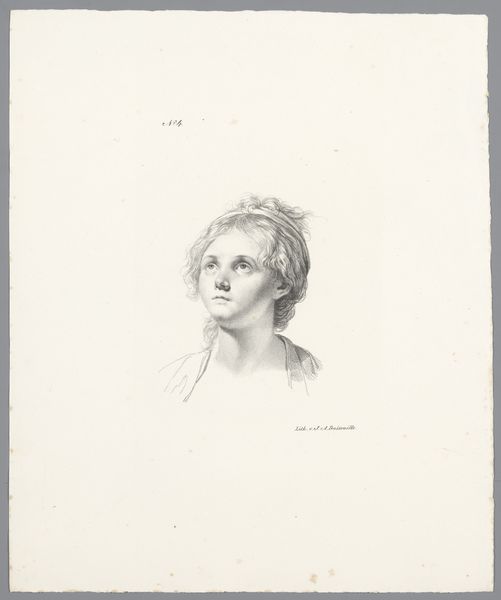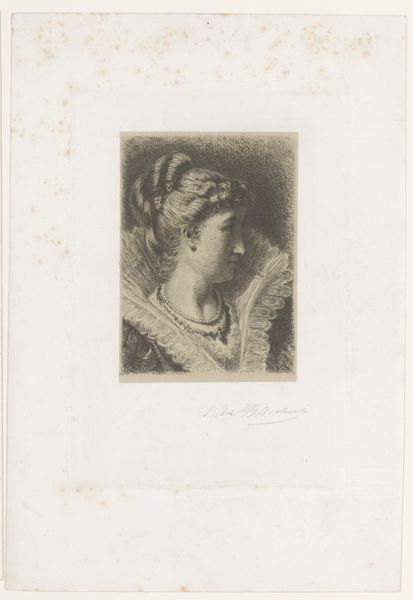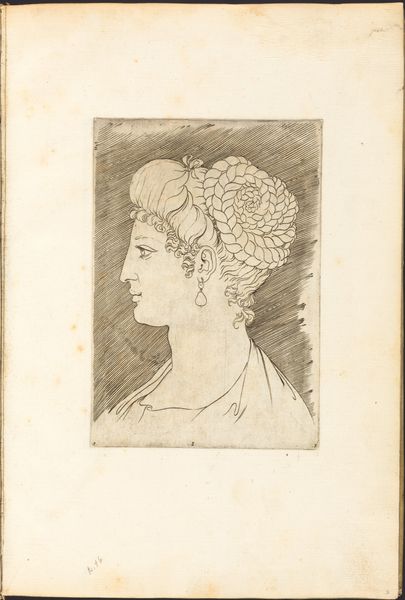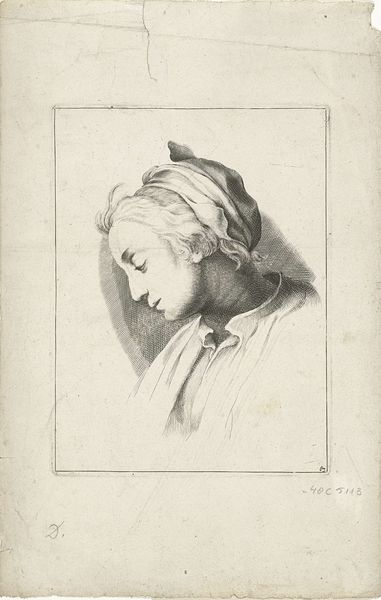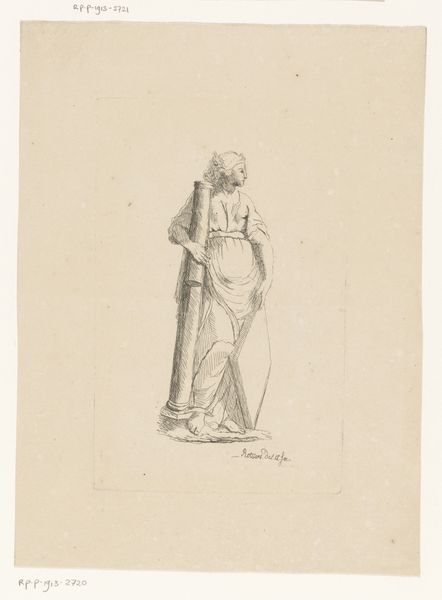
drawing, pencil
#
pencil drawn
#
drawing
#
pencil drawing
#
pencil
#
portrait drawing
#
academic-art
#
portrait art
#
realism
Dimensions: height 317 mm, width 237 mm
Copyright: Rijks Museum: Open Domain
Editor: This is "Mannenkop," a pencil drawing, possibly from 1848, by August Allebé. It's striking how peaceful the subject looks, almost meditative. How do you interpret this work within the artistic and social context of its time? Curator: It’s interesting you pick up on the peace. Consider the context: the revolutions of 1848 were shaking Europe. Academic art, with its emphasis on idealized forms, was being challenged by Realism. Do you see any signs of that tension here? The precision suggests academic training. Yet, the averted gaze might signal a rejection of the direct, confrontational portraits often favored by the elite. Editor: So, it’s caught between styles? I notice her head covering… what significance might that have held? Curator: Exactly! The covering is not overtly religious but certainly adds an element of modesty, aligning perhaps with societal expectations for women’s representation. It could also hint at a deeper, less visible, narrative – the woman's personal story shielded from the viewer, making this a study of the internal as much as the external. We also need to consider how portraits circulated – were they for private enjoyment or public display? Editor: I hadn't considered the possible social functions. How the work functions, then, can’t be separated from how the work was seen by others at the time. Curator: Precisely! Its role within Allebé's larger body of work is also critical, but in general, thinking about art involves analyzing how it shapes and is shaped by society and the public arena. What’s your biggest takeaway? Editor: That it reflects not just individual artistry but a push-and-pull between the artist, the subject, and a turbulent social backdrop. There’s a whole power dynamic involved in image making. Curator: Indeed. Seeing art this way lets us move beyond aesthetics and explore it as a form of visual and social history.
Comments
No comments
Be the first to comment and join the conversation on the ultimate creative platform.
